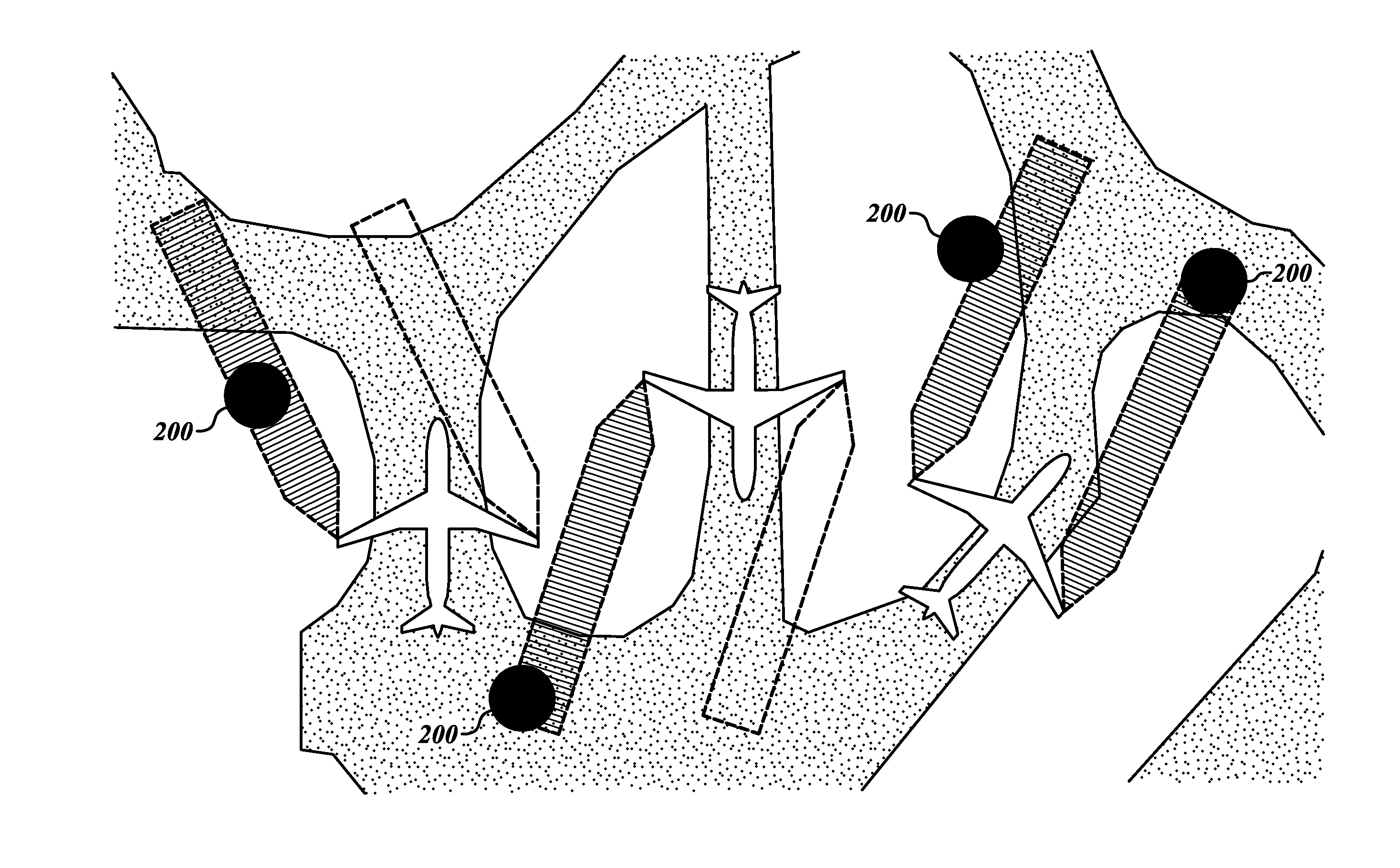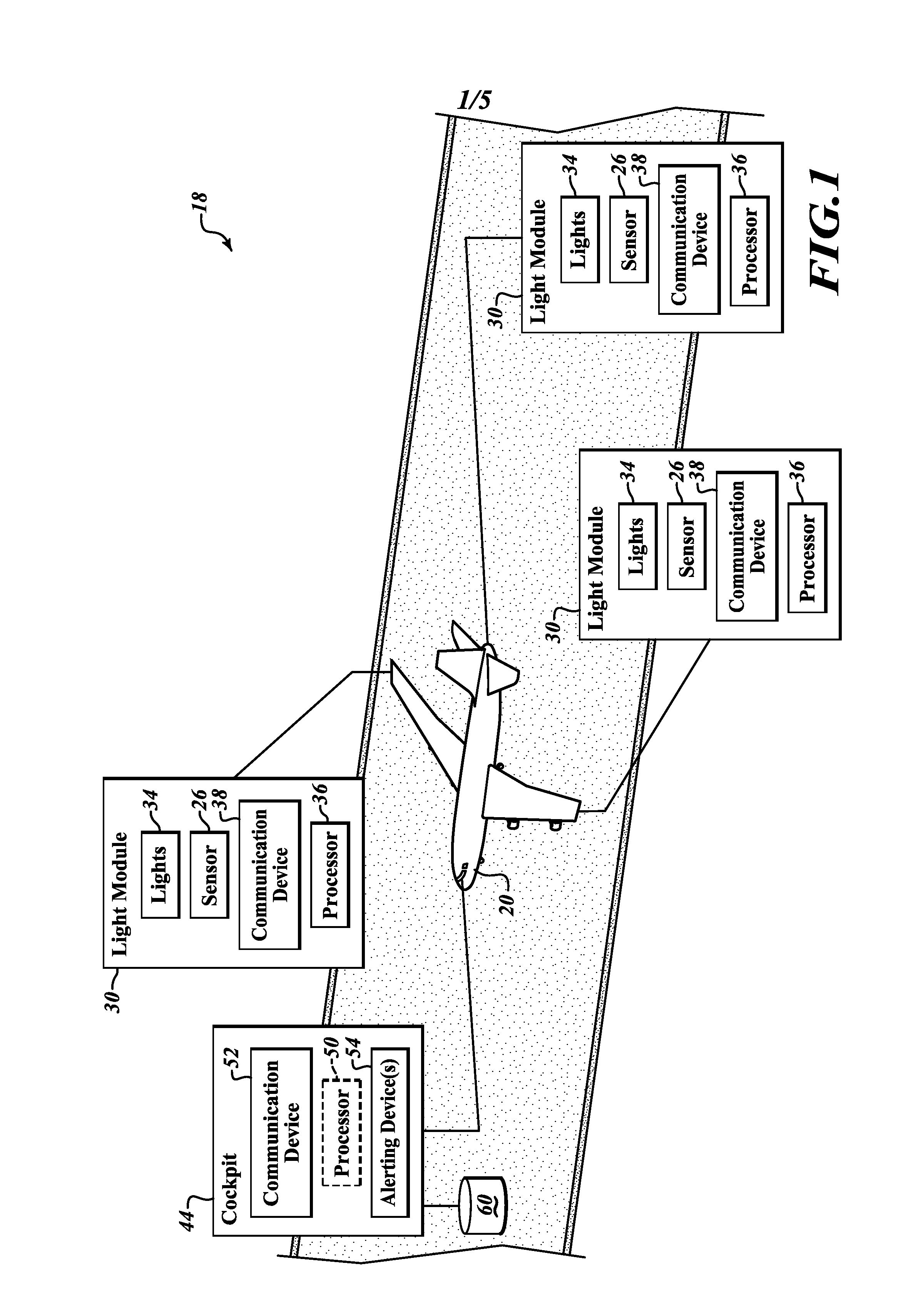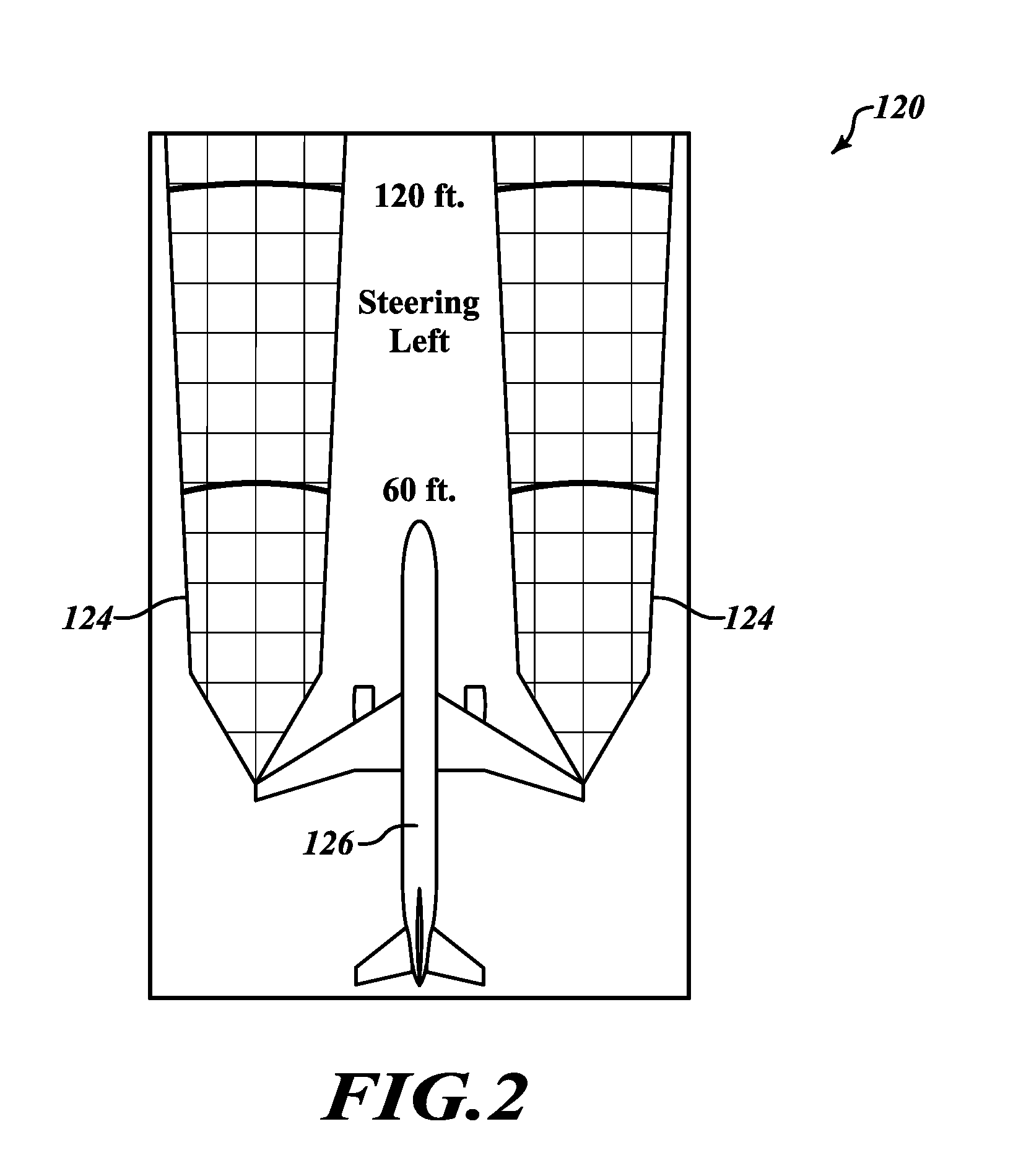Systems and methods for using radar-adaptive beam pattern for wingtip protection
a technology of radar adaptive beam and protection wingtip, which is applied in the direction of aircraft braking arrangement, navigation instruments, instruments, etc., can solve the problems of insufficient time for aircrew to respond to the given situation, the safety problem of aircraft wingtips clipping obstacles, and the cost of solutions. limited
- Summary
- Abstract
- Description
- Claims
- Application Information
AI Technical Summary
Problems solved by technology
Method used
Image
Examples
Embodiment Construction
[0011]In one embodiment, as shown in FIG. 1, an exemplary airport surface collision-avoidance system (ASCAS) 18 includes an aircraft 20 that includes an electrically and / or mechanically steerable sensor 26 (e.g., active sensor, radar, or passive sensor camera) included within aircraft light modules 30 or located at the other positions about the aircraft 20. The light modules 30 also include navigation / position lights 34, a processor 36, and a communication device 38. The sensors 26 are in communication via the communication device 38 (wired or wirelessly) to a user interface (UI) device 44.
[0012]In one embodiment, the UI device 44 includes a processor 50 (optional), a communication device (wired or wireless) 52, and an alerting device(s) 54. The UI device 44 provides audio and / or visual cues (e.g., via headphones, PC tablets, etc.) based on sensor-derived and processed information.
[0013]Based on information from the sensors 26, the UI device 44 provides some or all of the following ...
PUM
 Login to View More
Login to View More Abstract
Description
Claims
Application Information
 Login to View More
Login to View More - R&D
- Intellectual Property
- Life Sciences
- Materials
- Tech Scout
- Unparalleled Data Quality
- Higher Quality Content
- 60% Fewer Hallucinations
Browse by: Latest US Patents, China's latest patents, Technical Efficacy Thesaurus, Application Domain, Technology Topic, Popular Technical Reports.
© 2025 PatSnap. All rights reserved.Legal|Privacy policy|Modern Slavery Act Transparency Statement|Sitemap|About US| Contact US: help@patsnap.com



